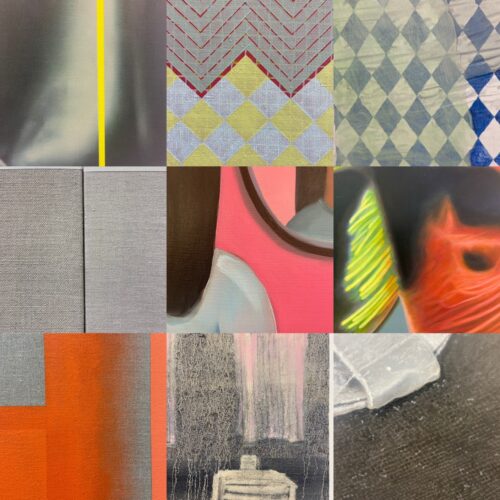
John Minton
Join OCA tutor Jim Cowan on the 16 September in Chichester.
More people know the work of John Minton than they realise. He was a painter and illustrator, often categorised as a neo-romantic, who was at his most influential in the 1940s and 1950s. The illustrations that brought his name to a wide audience were those done for Elizabeth David’s ‘A book of Mediterranean Food and ‘French Country Cooking’ two volumes that were highly influential in changing British culinary tastes, with Minton’s illustrations playing an important part in their popularity.
The Pallant House Gallery in Chichester is one of a number of galleries that champion neglected English artists. A roll call would include David Jones, Edward Burra, Christopher Wood, Leon Underwood and many more. For artists fashion can be both fickle and fleeting. What was once popular very soon becomes old hat and qualities once thought highly of are soon replaced with something new.
The neo-romanticism adopted by artists in wartime Britain, such as Graham Sutherland and John Piper, was soon replaced by a more austere post-war realism with John Minton’s personality and charisma enlivening the scene. He was an influential and popular tutor, a prolific illustrator, a painter of exotic landscapes and portraits and this centenary exhibition revisits his work and explores his reputation and achievements.

Drawing was central to his practice and Minton’s fluent draughtsmanship served him well as an artist. His subject matter encompassed the docklands of London to the more exotic landscapes of Corsica, the Mediterranean and the Caribbean.
His star was in the ascendency until the arrival of Abstract Expressionism into post-war Britain made his figurative compositions unfashionable. Minton’s subsequent loss of confidence and his struggles with personal demons helped contribute to his early death at the age of 39.
Students coming on this study visit will see the work of an artist whose popularity was a result of a romantic decorative sensibility that served to bring light into a grim post-war Britain.
Also on view at the Pallant House Gallery will be paintings and drawings by the influential teacher William Coldstream, a display of British neo-romantic art and of course the excellent permanent collection.

To reserve your place please email enquiries@oca.ac.uk or alternatively to request a place on a study visit please click here and complete the form.
For study events that require a ticket, there is a non refundable fee of £10 to pay and your confirmation email will instruct you on how to do this.






John Minton was a great inspiration to me without knowing it.
We listened and sang along with BBC schools radio programmes in the late 50s in my primary school Victorian classroom. The booklets that accompanied them with words and music were interspersed with illustrations which fascinated me with their bittersweet air. It was only when I saw a brilliant exhibition at the Barbican about the cultural context of the Neo-Romantics that I realised that some were by Minton and when I photographed Patrick Procktor for an editorial feature I was excited to find he’d known John Minton.
That is of course meant to mean ‘without (me) knowing it.
Minton was a prolific illustrator and was widely reproduced in books, magazines and in advertising work much of which was unsigned. Fine Artists in those days would often do ‘Commercial Art’ as it was then called and as a popular tutor he greatly influenced students often passing work on to them if he couldn’t do it himself.
Here is a video of Peter Blake talking about Minton
-http://pallant.org.uk/exhibitions/current-exhibitions/main-galleries/john-minton-a-centenary/john-minton-a-centenary/films1/sir-peter-blake-on-john-minton
Very interesting, thank you. We’ll definitely go on a day trip to that.
I only came across John Minton when studying the History of Illustration course recently. I think his whole life is totally fascinating and I would love to visit Pallant House, however I live near Edinburgh so Chichester is just too far to travel to for this learning opportunity. Hoping to find out if I can do a virtual tour of it. Would love to have come to the Sept event.